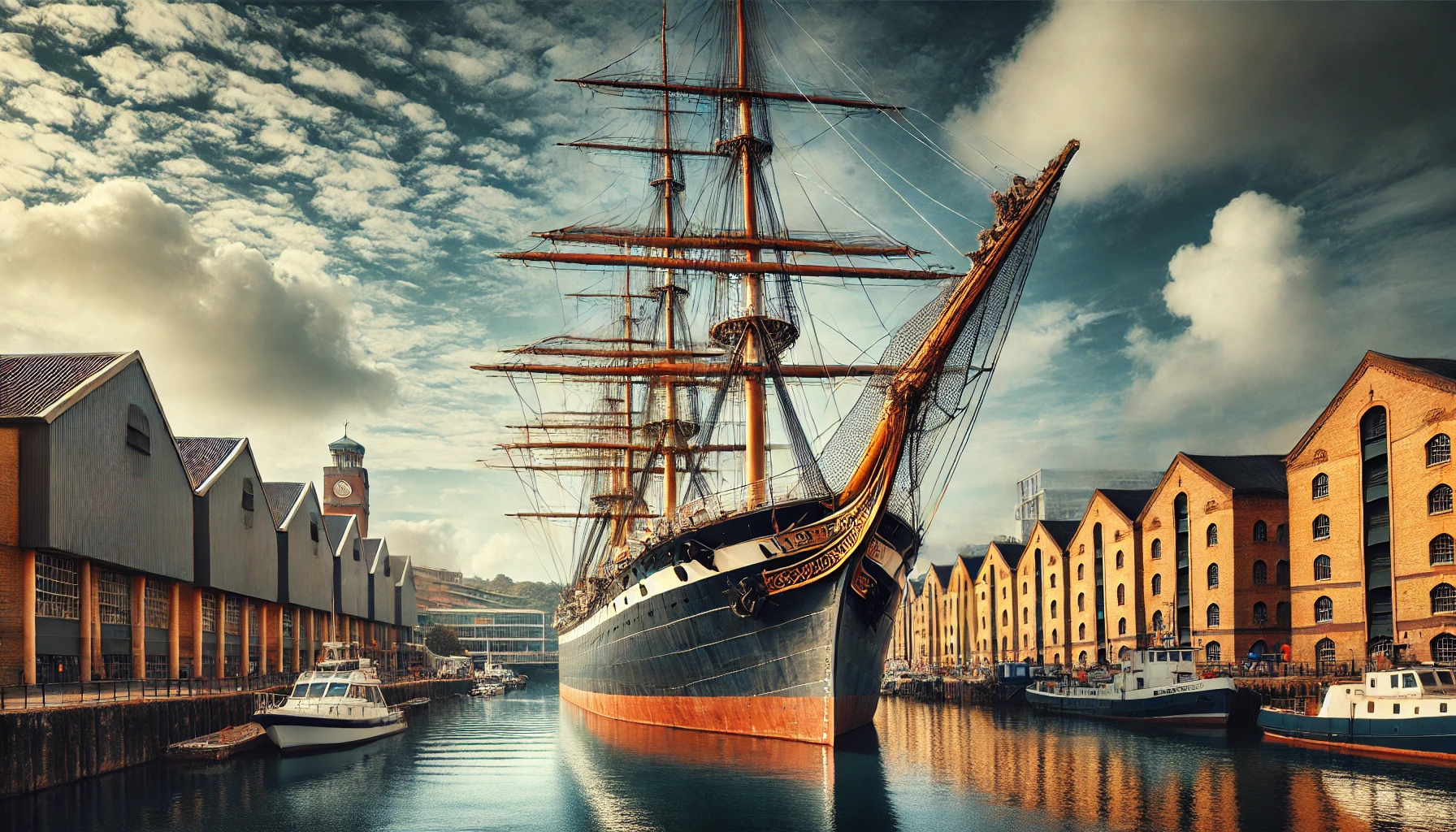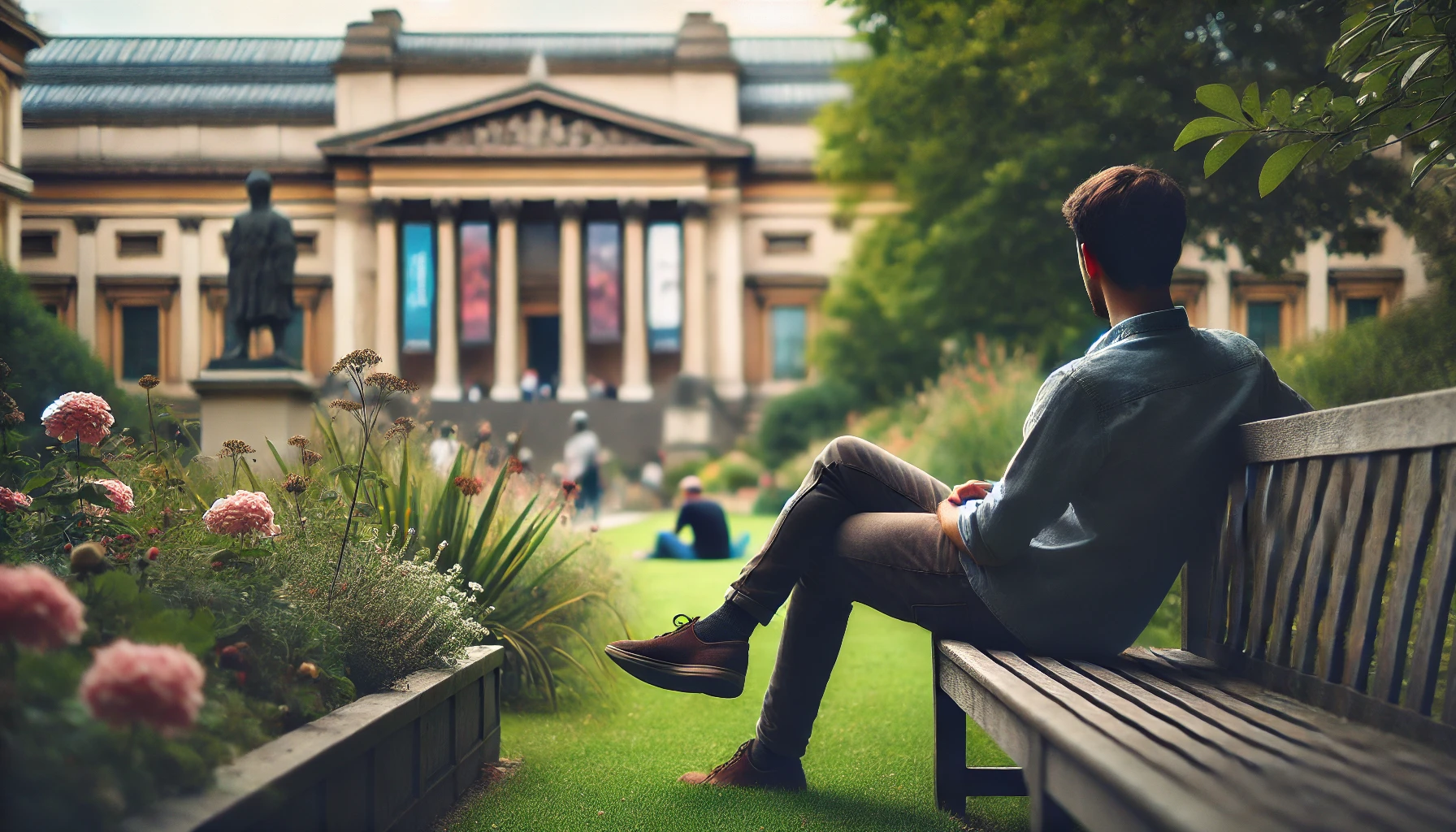
The Top 5 Museums in Bristol for a Cultural Day Out
When planning a cultural day out, nothing beats exploring the rich history and artistic heritage that Bristol has to offer. The city is home to a variety of fascinating museums, perfect for anyone looking to immerse themselves in art, history, and culture. Whether you’re a history enthusiast or an art lover, the museums in Bristol for a cultural day provide a wealth of knowledge and inspiration, making for a perfect outing.
Bristol’s rich history is captured beautifully through its many historic sites. Whether it’s ancient landmarks or modern museums that highlight the city’s journey through time, you’ll find ample opportunity to dive deep into Bristol’s vibrant past. Visiting the historic sites in Bristol is an excellent way to set the stage for an enriching cultural experience, giving you a sense of the city’s heritage and its evolution through the ages.
If your interests lean more toward the arts, Bristol’s creative pulse shines brightly through its diverse art collections. The city has long been a hub for artists and creatives, and exploring its arts scene is one of the best ways to appreciate its cultural depth. From modern galleries to street art exhibits, you can get a taste of Bristol’s artistic prowess by immersing yourself in its renowned arts scene, which showcases both local and international talent.
History buffs will also find plenty to marvel at in Bristol’s top museums. The city offers a fascinating array of exhibitions that highlight significant historical events and local stories. Exploring Bristol attractions for history buffs will enrich your understanding of the city’s pivotal role in shaping the region’s culture and historical milestones.
For those with a passion for art, Bristol has several museums and galleries dedicated to showcasing the best of local and international art. A visit to any of Bristol’s art museums will leave you inspired and awed by the impressive range of collections. Discovering the top attractions for art lovers in Bristol ensures a fulfilling cultural journey that celebrates creativity in all its forms.
Finally, a well-rounded cultural day in Bristol would not be complete without taking in the city’s broader attractions. Whether you’re a history fanatic or an art aficionado, there’s always something to discover at the top attractions in Bristol for a day out, making it the perfect destination for a cultural excursion.
Bristol’s museums offer a unique blend of history, art, and culture, making them ideal for a memorable cultural day out. Whether you’re visiting to explore the city’s history, delve into its vibrant art scene, or simply learn more about its heritage, these museums provide a wealth of insight into the rich cultural fabric that makes Bristol so special.
Bristol Museum & Art Gallery: A Cultural Icon

Bristol Museum & Art Gallery, located on Queens Road, is one of Bristol’s most renowned cultural institutions. It offers a diverse collection of art, archaeology, and natural history, making it a must-visit for those interested in exploring both local and global culture.
The museum houses more than 20 galleries, covering topics from ancient civilizations to contemporary art. The Egyptian gallery is a major attraction, displaying a wealth of artifacts, including beautifully preserved mummies and hieroglyph-covered tombs. For history lovers, the museum also delves into Assyrian, Roman, and prehistoric collections, with an array of pottery, sculptures, and coins.
Bristol Museum is also home to a world-class art collection. It showcases a wide variety of European and British paintings from artists such as J.M.W. Turner, John Everett Millais, and other Pre-Raphaelite painters. There’s also an extensive section dedicated to Asian art, with Chinese ceramics and Japanese prints offering a unique cultural insight.
For natural history enthusiasts, the museum’s exhibits are equally impressive. The fossil collection is a particular highlight, with rare and fascinating specimens, including Thecodontosaurus, a type of dinosaur discovered in Bristol. Additionally, the museum features displays of minerals, wildlife, and taxidermy, providing a deep dive into the Earth’s natural wonders.
Temporary exhibitions keep the museum experience fresh, often focusing on contemporary local and international artists, which adds modernity to the classic charm of the museum. Visitors can also enjoy free entry, making this a valuable and affordable cultural stop in Bristol.
Bristol Museum & Art Gallery offers an all-encompassing cultural experience, whether you’re exploring its fine art collections, delving into the depths of ancient history, or marveling at natural history displays. Its broad range of exhibits makes it one of the best destinations in the city for art lovers, history enthusiasts, and families alike. With interactive exhibits and workshops held throughout the year, the museum ensures that there’s always something new to learn, making it a compelling stop for a cultural day out in Bristol.
M Shed: Bristol’s Story Brought to Life
M Shed is Bristol’s interactive museum that brings the city’s history, culture, and people to life. Located along the Harbourside, this innovative museum focuses entirely on Bristol’s past, present, and future, offering an immersive experience that tells the story of the city through the eyes of its inhabitants.
The museum is divided into three main galleries: Bristol Places, Bristol People, and Bristol Life. Each gallery explores a different aspect of the city’s identity, showcasing how Bristol has developed over the centuries and how its people have shaped it. Bristol Places, for example, delves into the architectural and geographical evolution of the city, with exhibits detailing Bristol’s transformation from a medieval town to a modern metropolis. The gallery features models, maps, and interactive displays that allow visitors to explore the city’s landmarks and iconic buildings.
Bristol People highlights the diverse communities that have contributed to the city’s rich cultural fabric. From local heroes and politicians to everyday citizens, the museum celebrates the individuals who have made Bristol what it is today. Personal stories, photographs, and memorabilia provide an intimate look at the city’s residents and their impact on the social and cultural landscape.
The Bristol Life gallery is particularly popular with visitors, offering a comprehensive look at the city’s cultural contributions, from its renowned music scene to its sporting achievements. The gallery covers everything from street art, featuring pieces by Bristol’s famous Banksy, to the history of the city’s vibrant festivals and events.
M Shed is also known for its collection of working exhibits. Outside the museum, visitors can see historic cranes, boats, and steam engines, many of which are still operational during special events. These artifacts are a reminder of Bristol’s industrial past and its significance as a major port city.
With free entry, M Shed provides an accessible and educational experience for visitors of all ages. Its blend of interactive exhibits, personal stories, and historical artifacts offers a unique insight into the identity and character of Bristol, making it an essential stop for anyone wanting to understand the city’s heart and soul.
SS Great Britain: A Maritime Marvel

The SS Great Britain is one of Bristol’s most iconic attractions and a testament to the innovative spirit of Isambard Kingdom Brunel, one of Britain’s most famous engineers. Launched in 1843, the SS Great Britain was the world’s first iron-hulled, steam-powered ocean liner, revolutionizing maritime engineering and transforming global travel. Today, the ship is docked at Bristol’s Harbourside, where visitors can explore its rich history and experience life aboard this historic vessel.
Upon stepping aboard, visitors are transported back to the Victorian era. The ship’s interiors have been meticulously restored to their original state, allowing guests to explore the first-class dining saloon, the cramped steerage quarters, and the engine room, where Brunel’s engineering brilliance comes to life. Each area of the ship has been recreated to reflect the experience of passengers during the ship’s many voyages, offering a fascinating look into 19th-century travel.
One of the most popular features of the SS Great Britain is the Dockyard Museum, which provides detailed insights into the ship’s construction, design, and its historical significance. Interactive exhibits and personal stories of passengers and crew members help bring the history of the ship to life, making it a truly immersive experience.
The Dry Dock is another highlight, offering a rare opportunity to walk beneath the ship and admire its vast iron hull. Visitors can learn about the preservation techniques used to maintain the ship and appreciate the scale and complexity of Brunel’s engineering marvel.
In addition to its historical exhibits, the SS Great Britain frequently hosts events, from historical reenactments to family-friendly activities that make the experience even more engaging. The ship also boasts a café and gift shop, offering maritime-themed souvenirs and a place to relax after exploring the ship.
For maritime enthusiasts, history buffs, and families alike, the SS Great Britain offers a unique and educational experience. Whether you’re interested in engineering, history, or simply want to experience life aboard one of the most significant ships in maritime history, the SS Great Britain is a must-visit attraction in Bristol.
The Georgian House Museum: An 18th-Century Time Capsule
The Georgian House Museum, located in the heart of Bristol, offers visitors a glimpse into the life of a wealthy Georgian sugar merchant. Built in 1790, the house has been beautifully preserved and restored to its original grandeur, providing an authentic look at 18th-century domestic life. The museum offers a fascinating insight into both the opulent lifestyle of the upper class and the darker aspects of Bristol’s role in the transatlantic slave trade.
The house belonged to John Pinney, a successful merchant and plantation owner who made his fortune through the sugar trade. Each room in the Georgian House Museum has been carefully furnished with period-appropriate furniture, artwork, and household items, allowing visitors to step back in time and experience the elegance of Georgian living. The dining room, for example, features an elaborate table setting that reflects the importance of formal dining during this period.
One of the most striking aspects of the Georgian House is its grand staircase, which leads visitors to the drawing room and bedrooms, each adorned with fine paintings, intricate furniture, and decorative items that speak to the wealth of the family that lived there. The drawing room, in particular, is a highlight, with its ornate plasterwork and opulent furnishings that exemplify the refined taste of the Georgian era.
Downstairs, the kitchen and housekeeper’s room provide a stark contrast to the luxury of the upper floors, offering a look at the hard work that went into maintaining such a grand household. Visitors can explore the working kitchen, complete with period cooking utensils, as well as the servant quarters, where the domestic staff would have lived and worked.
The Georgian House Museum also provides information about the enslaved people who worked on Pinney’s Caribbean plantations, offering a sobering look at Bristol’s connection to the slave trade. This aspect of the museum adds a layer of historical context that deepens visitors’ understanding of the economic and social forces that shaped 18th-century Bristol.
With free entry, the Georgian House Museum is a valuable cultural and educational destination for those interested in history, architecture, and the complexities of Bristol’s past.
The Red Lodge Museum: A Journey Back to Tudor and Stuart Bristol

The Red Lodge Museum, one of Bristol’s most charming and well-preserved historic houses, offers visitors a unique insight into Tudor and Stuart life. Built in 1580, the house has undergone several transformations over the centuries, making it a fascinating reflection of the architectural and social changes that have shaped Bristol’s history. Nestled in the heart of the city, The Red Lodge is a true hidden gem that transports visitors to a bygone era.
Upon entering The Red Lodge, visitors are immediately struck by the grandeur of the Great Oak Room, a stunning example of Tudor craftsmanship. The room features intricate wood paneling, an impressive fireplace, and ornate plasterwork, all of which have been meticulously restored to their original condition. The rich, dark wood and detailed carvings reflect the wealth and status of the house’s original owners, offering a glimpse into the opulence of Tudor life.
The museum’s other rooms span different periods, showcasing the transitions the house has undergone since its construction. The upstairs parlor and bedrooms feature Georgian furnishings, illustrating how the house was updated in the 18th century to reflect changing tastes and styles. Each room is carefully curated to reflect the era it represents, allowing visitors to trace the house’s history through its architecture and interior design.
One of the most unique features of The Red Lodge Museum is its beautiful knot garden, a small, peaceful space designed in the Elizabethan style. The garden offers a tranquil retreat from the city’s hustle and bustle and is the perfect spot to reflect on the history of the house and its surroundings.
The Red Lodge also has an interesting connection to the history of women’s education. In the 18th century, the house became the site of the first school for girls in Bristol, founded by the social reformer Mary Carpenter. This aspect of the museum highlights the progressive role that the house played in the city’s educational history, adding another layer of significance to the site.
With free entry, The Red Lodge Museum is a captivating cultural attraction that offers a window into Bristol’s past. Its blend of Tudor, Stuart, and Georgian architecture, combined with its rich historical context, makes it a must-visit for anyone interested in Bristol’s heritage.
Blaise Castle House Museum: A Scenic Cultural Escape
Blaise Castle House Museum, set within the expansive Blaise Estate, offers visitors a fascinating journey through time, exploring the domestic and social history of Bristol. Built in 1796, the house is a stunning example of late 18th-century architecture and houses an extensive collection of artifacts that reflect everyday life from the Victorian era to the 20th century. Located in the scenic Blaise Castle Estate, the museum is the perfect blend of culture and nature, offering a full day’s worth of exploration.
The museum’s exhibits cover a wide range of topics, from toys and games to household items, each offering a glimpse into domestic life over the centuries. The Victorian toy collection is a particular highlight, featuring everything from dolls’ houses to tin soldiers, providing a nostalgic look at the childhoods of generations past. The household exhibits, meanwhile, include kitchen utensils, furniture, and other domestic objects that showcase how life in Bristol evolved through the ages.
One of the museum’s standout features is its costume collection, which displays clothing and accessories from the 18th century through to the 20th century. Visitors can admire intricately embroidered dresses, bonnets, and waistcoats, each piece offering a glimpse into the fashion trends of different eras. The costume collection is beautifully presented, providing an educational and visually appealing look at historical fashion.
Blaise Castle House Museum is also known for its stunning location within Blaise Estate. The grounds feature woodlands, meadows, and walking trails, making it a popular destination for those who want to combine culture with a scenic day out. The estate is also home to Blaise Castle, a mock medieval folly that offers spectacular views of the surrounding countryside.
With free entry and a picturesque setting, Blaise Castle House Museum is a perfect destination for families, history enthusiasts, and anyone looking to escape into nature while enjoying a rich cultural experience. The combination of the museum’s historical exhibits and the estate’s natural beauty makes it one of Bristol’s most unique and enjoyable attractions.
Aerospace Bristol: A Journey Through the Skies

Aerospace Bristol is an award-winning museum that takes visitors on an incredible journey through the history of aviation. Located at Filton, just outside of Bristol, this museum is home to the iconic Concorde Alpha Foxtrot, the last Concorde to ever fly, as well as a fascinating collection of aircraft, engines, and aerospace artifacts that tell the story of Bristol’s pioneering role in aviation.
The museum’s centerpiece, Concorde Alpha Foxtrot, is a must-see for any aviation enthusiast. Visitors can step aboard the supersonic jet and explore its luxurious interiors, learning about the science behind its incredible speeds and the technological innovations that made Concorde a marvel of modern engineering. The interactive exhibits allow visitors to experience what it was like to fly at twice the speed of sound, offering a thrilling glimpse into the world of supersonic travel.
Beyond Concorde, Aerospace Bristol boasts a comprehensive collection of aircraft that trace the development of aviation from its earliest days to the cutting-edge technologies of the modern era. The museum features everything from early biplanes to fighter jets used during World War II, each accompanied by detailed explanations of their design, function, and historical significance.
One of the highlights of Aerospace Bristol is its focus on the future of aerospace. Interactive exhibits explore the latest advancements in aviation technology, including space exploration and unmanned aircraft. The museum also offers hands-on activities and workshops that engage visitors of all ages, making it an ideal destination for families and school groups.
Aerospace Bristol provides a comprehensive and immersive experience, offering visitors a chance to explore the history of flight and learn about the innovations that have shaped the modern world. Whether you’re an aviation enthusiast, a history buff, or simply curious about the science of flight, Aerospace Bristol offers an educational and entertaining day out.
Conclusion: Exploring Bristol’s Rich Cultural Landscape

Bristol is home to an extraordinary array of museums, each offering its own unique insight into the city’s history, culture, and scientific achievements. From the fine art and ancient artifacts housed at Bristol Museum & Art Gallery to the aviation marvels at Aerospace Bristol, there is something to captivate every visitor.
The SS Great Britain stands as a monument to the city’s maritime heritage, while M Shed offers a more personal look at Bristol’s industrial and social history. The Georgian House Museum and The Red Lodge Museum transport visitors back to different eras, showcasing the city’s architectural and cultural evolution. Blaise Castle House Museum, with its picturesque setting, provides a serene escape into both history and nature.
Each museum offers an enriching experience, providing valuable educational insights and making Bristol a premier destination for cultural exploration. Whether you’re a local looking to rediscover the city’s treasures or a visitor eager to delve into Bristol’s vibrant history, these seven museums offer a perfect itinerary for a cultural day out.





